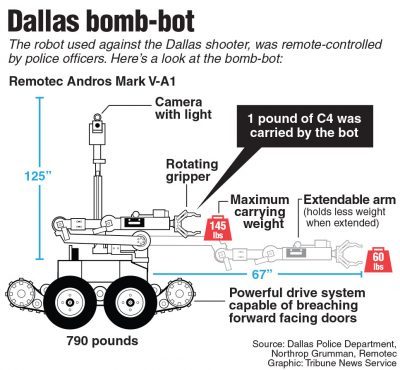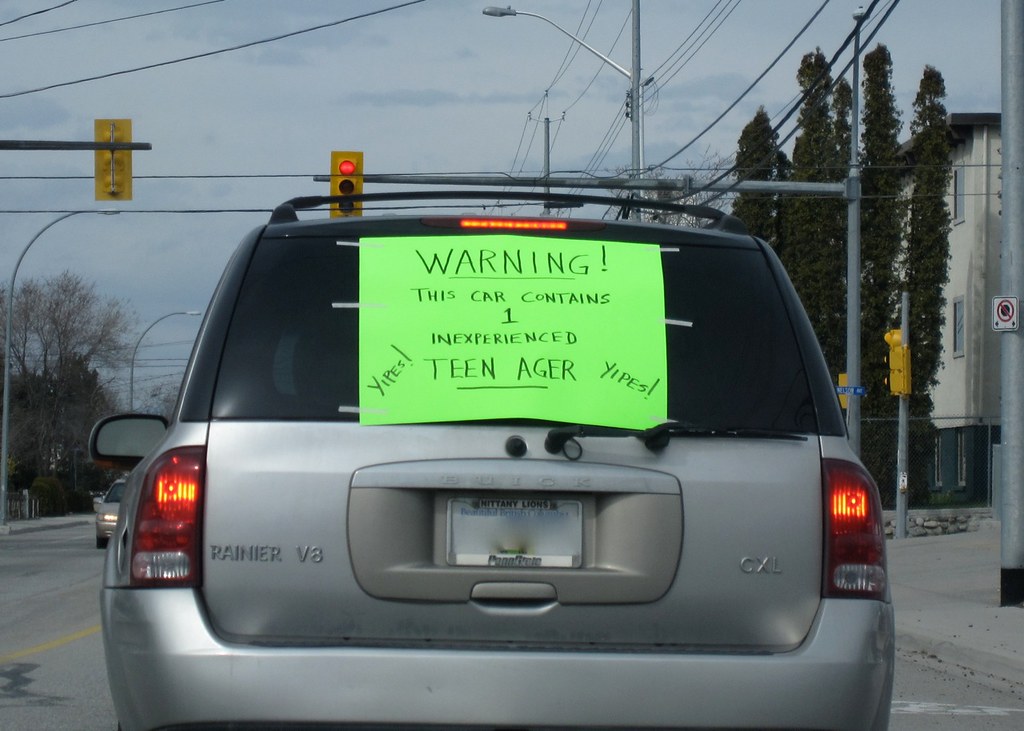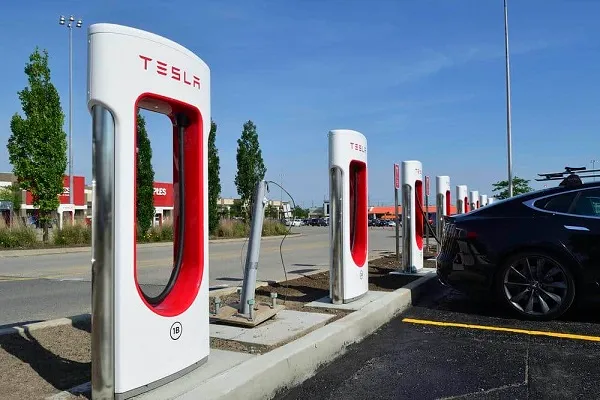BY: JUN YUN
Staff Writer
Police brutality has been the centerstone of debate for roughly the past two years. Dating back from the choking of Eric Garner in New York, to the recent shootings of Alton Sterling and Philando Castille this past summer, police physical and gun-related violence has been an alarming trend. It can be seen that multiple police forces are now adopting another weapon to their arsenal: a robot police. The use of a technologized police officer represents the genesis of a transformation in the police force: these robots necessitate precaution, but, contrary to popular belief, do not necessarily present a novel threat to civilian life and do not portend an upsurge in police militarization.
In July of 2016, the Dallas Police Department employed an armed robot to deliver an explosive that would kill Micah

Johnson, a black militant and army veteran suspected of killing 12 people, including a white police officer, in the Black Lives Matter march in Downtown Dallas. Surprisingly, the Dallas Police Department’s robot, the Northrop Grumman Remotec Andros robot, is not built to employ explosives, only to detect them, according to the company’s website. In addition, according to a CNN Report, Dallas Police Chief David Brown said that, “We saw no other option but to use our bomb robot and place a device on its extension for it to detonate where the subject was.” The evidence is clear that the Dallas Police Department converted a non-lethal machine into a lethal one; otherwise, these robotic devices would not engage in the targeting of any particular person or group. The threat of lethal robots can be considered an anomaly at this point because an exception was brought about by the Dallas Police Department’s violation of the intended purpose of the robot.
Although this is one of the first uses of a deliberately lethal robotic police system, this Dallas Police Department robot was not an autonomous robot, meaning both the robot and the explosive were manually operated from an external source. As of now, a lethal robotic police is no different from a lethal human police, in technical terms. It can be categorized under military technology, such as drones or submarines, which have been used lethally on the battlefield for years, yet also controlled by another human operator from a remote source. Nevertheless, there must still be significant precaution in advancing lethal robotic police because major legal and ethical dilemmas arise amongst error: who is to blame, the robot or the officer who controlled the robot?
It must also be considered that the deployment of technologized police officers, a majority of which are explosive disposal machines, is a common practice in hundreds of cities. The Wired reports that there are several other semi-autonomous law enforcement technologies in use, including South Korea’s Prison Robo-Guard, India’s Riot Control Drones, Brazil’s Olympic bomb-detection Peacekeeper, and Greece’s robotic refugee-saving flotation device. Because multiple police forces are utilizing this robotic system, it is incorrect to portend another mass spread of lethal police robots. For military purposes, drones are a common practice, but until warfare weaponry intersects with law enforcement weaponry, it is erroneous to assume that police departments will radically transform into heavy-weapons platoons.
Robotics is already a common practice in most militaries and police departments, and even the “driverless car” is an emerging technology in the transportation industry. In the future, the proliferation of lethal robots will raise legal and ethical concerns; although excessive police violence is addressed by the Fourth Amendment, the threat of a robot is difficult to interpret and analyze. There is certainly a need for regulation at some level, but until the genesis and dissemination of self-operating robots on either the battlefield or civilian streets, we have no reason to believe that robots will overtake law enforcement agencies.
The Misconception of Technologized Police Militarization
September 19, 2016

Info graphic on the bomb defusal bot that was used to kill Micah Johnson in Dallas. TNS 2016
0
Donate to Sword & Shield
$180
$1000
Contributed
Our Goal
Your donation will support the student journalists of University High School. Your contribution will allow us to purchase equipment and cover our annual website hosting costs.
More to Discover













